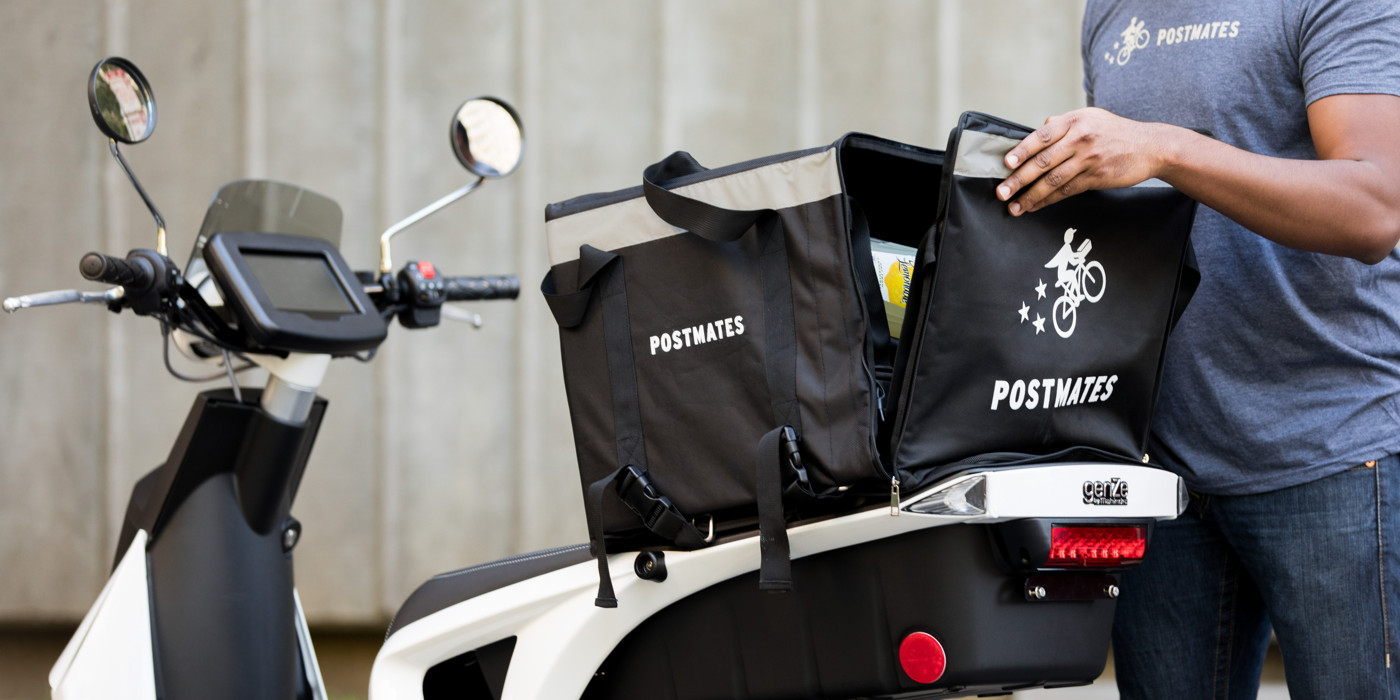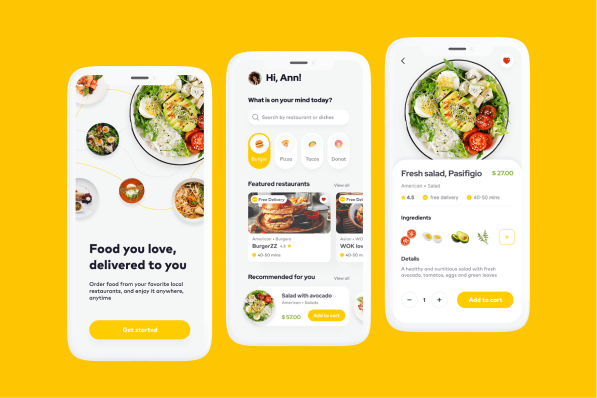Month: March 2023
How to Make an App Like Postmates: Business Model, Solutions & Costs
Food delivery apps are on the rise, especially today when we’re encouraged to stay home. The market is full of great last-mile delivery solutions, but Postmates stands out from the crowd. In this article, we talk about how to make an app like Postmates.
What is Postmates and how does it work?
At its core, Postmates is a courier service. While it started as a food delivery app, it has evolved into a major last-mile delivery service across the United States. Postmates and its services are available 24/7, allowing you to get anything you need, anytime, anywhere. How great is that?
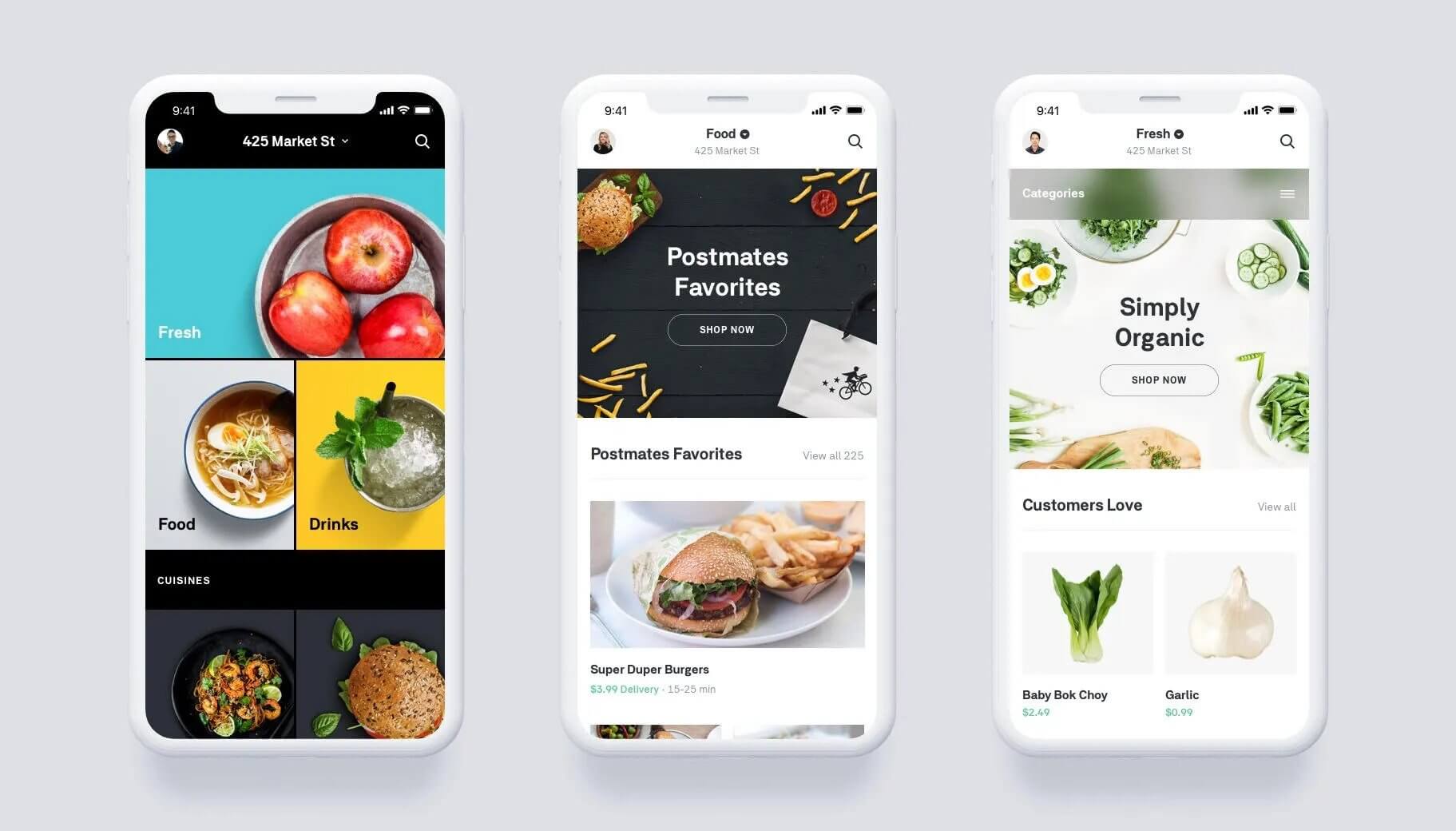
Anyone can work as a Postmates courier. To become a courier, all you need to do is fill out a simple form. Couriers can deliver things by car, bike, or even foot. The Postmates approach is useful for everybody. First, Postmates allows couriers to work flexible schedules and gives customers what they want — fast doorstep delivery.
Postmates’ awesome statistics
Now that you know what Postmates is, let’s see why we decided to talk about last-mile delivery using Postmates as our example. Here are some statistics that demonstrate this app’s success:
- 7 years on the market
- 2 years to reach its first million deliveries
- 9.1% US food delivery market share
- $280 million in funding
- 250,000 business partners
- 2,940 cities of operation
- 2 million deliveries per month
- 60,000 vehicles in the delivery fleet
- 5,341 employees
Why did Postmates succeed?
Today, we’ve all heard about Postmates, but there was a time when it needed to make itself known. Let’s find out what decisions brought Postmates the popularity it now has. Here are the four main factors that contributed to Postmates’ success.
Grabbing the on-demand delivery trend early on
When launching his startup, Postmates CEO and co-founder Bastian Lehmann said “We’re betting on the huge trend that local inventory will become unlocked and available to purchase, even in smaller retail stores, because you won’t have to go to the store anymore.”
Getting the marketing right
When it first started, Postmates was ahead of its time in creating an on-demand delivery app. It attracted early adopters who spread the word and established the trend. This also helped Postmates save 80% on marketing costs.
Making money from day one
Let’s be honest: money is a big concern when it comes to startups. The fact that Postmates got ROI fast made all the difference. This got the app the attention and trust of early investors.
Early success
Early success created a positive feedback loop for Postmates, allowing the company to gain some major investments and partners. Postmates got official contracts with 7-Eleven, Apple, McDonald’s, Starbucks, Walgreens, Chipotle, and many other well-known companies.
Aiming big
Postmates was determined to become a part of the city’s infrastructure. It operated in high demand and competed with giants like Uber and Amazon.
An app like Postmates: mistakes to avoid
Poor user experience
Great user experience has already become a standard, and users don’t tolerate apps with a confusing interfaces. Ensure your app has an intuitive user interface, easy navigation, and fast load times. Users won’t stick around if your app is difficult to use or slows them down.
Limited availability
Postmates is successful because it’s available in many cities and offers many restaurant options. Ensure your app is available in as many locations as possible and partners with as many restaurants and retailers as possible.
This may be tricky to achieve at first, so even if you launch your app in just one city, make sure to offer nearly all local restaurants.
Inconsistent service
Nothing irritates customers more than unfulfilled promises. If you’re promising a speedy delivery, ensure you can deliver on that promise consistently. Customers will quickly lose trust in your app if deliveries are late or unreliable. Compensation for being late will help one or two times, but then your customers will likely shift to another service.
Poor customer support
Make sure your app has a reliable and responsive customer support team to handle any issues or complaints that customers may have. Poor customer support can quickly lead to negative reviews and decreased user satisfaction.
Lack of marketing
Marketing is extremely important for food delivery apps, especially if there’s lots of competition. I recommend getting a solid marketing plan before you even start working on your delivery software. After launching your MVP, experiment with your messaging and marketing tools to focus on what works best for your business.
Poor security
Food delivery apps store lots of personal information: from emails and phone numbers to physical addresses and credit card information. Make sure your app is secure, and prevent any data breaches by testing your app for security regularly. Update your food delivery app frequently and fix any security issues immediately.
Must-have features of a Postmates-like app
Postmates features can be roughly divided into 4 main categories.
For a restaurant or store
- Login
- Menu management
- Order status management
- Push motifications
- Checking ratings and reviews
For customers
- Login
- Menu search and filters
- Cart
- Payment integration
- Order tracking
- Rating and reviews
- Customer support
- Delivery information management
- Settings

For a delivery person
- Registration
- Order management
- Updating the order status
- Maps and navigation
For administrators
- Admin login
- Restaurant management
- Application management
- Payment management
- Discount offers and coupons
- Technical assistance
- Role and access management
- Push notification management
Advanced features you can include in an app like Postmates
Basic features are great for building an MVP, but what can you add to your app to make it unique and win the competition? Here are some suggestions.
Real-time order tracking
This feature allows customers to track their orders in real-time, giving them an estimated delivery time and updates on the status of their orders. You can also implement maps where users will be able to track the location of a delivery person in real-time.
In-app chat support
This feature allows customers to communicate with their delivery driver or the support team directly within the app, eliminating the need for phone calls or emails. You can also implement a chatbot that will answer generic questions, saving time for your human support to resolve more complex issues.
AI-powered personalization
You can use AI to personalize your service for each user by analyzing their order history and preferences automatically. AI will allow you to send personalized promotions at a perfect time, thus increasing your conversion rates and revenue.
Scheduled delivery
Allow your users to order food in advance so that they can plan their deliveries for the upcoming events.
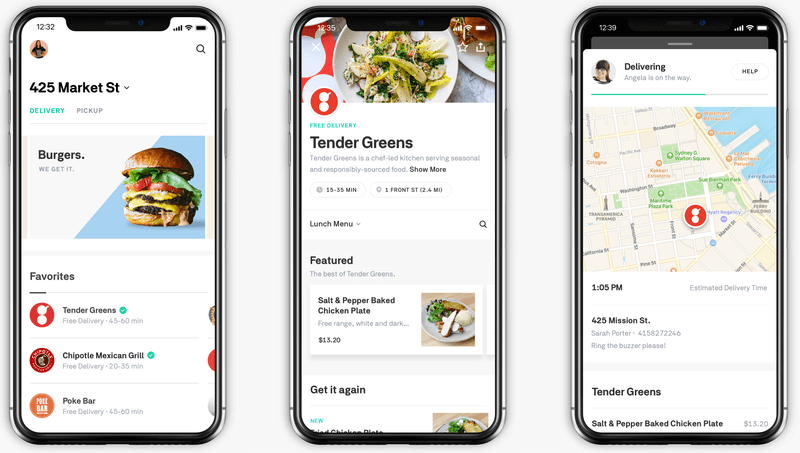
Group orders
Give your users an opportunity to place multiple orders from different accounts from the same restaurant. It will allow users to coordinate their meals and take care of their own payments.
Integration with Voice Assistants
Make your service more convenient and allow your users to place orders by simply telling what they’d like to order right now. The most popular voice assistants you can integrate your food delivery app with are Google Assistant and Amazon’s Alexa.
Augmented reality menu
Provoke your customers’ appetite with an augmented reality menu that will show the menu items in attractive 3D models. You can also use AR for marketing: for example, place fun AR models on QR codes placed on delivery packages.
Loyalty programs
Turn your first-time users into regular customers by implementing a loyalty program. There are lots of creative ways to reward your returning customers, from points that convert into discounts to special offers and referral bonuses.
By adding these advanced features, you can differentiate your app from competitors and provide a unique and valuable experience for your customers.
The postmates business model
Postmates is based on the crowdsourced marketplace model, which is hard to pull off. The challenge is to make all parties satisfied with your product. On-demand delivery apps have to solve retailers’ problems, provide visibility to restaurants, keep couriers motivated, and make customers happy. That’s a lot to think about. Getting the business model right has been difficult for many startups in the last-mile delivery business, including for UberRUSH, Shyp, and Doorman.
Value proposition
In our articles on how to make a certain type of app, we always talk about how important it is to come up with a unique value proposition. Let’s see what value proposition Postmates provides:
- One-stop marketplace in the app
- Great connectivity and visibility
- Vast inventory
- Quick delivery 24/7/365
Customer segments and key partners
The on-demand Postmates delivery app is built for three main customer segments:
- Buyers who want goods delivered to their doorsteps and are willing to pay for it
- Merchants and restaurants who benefit from orders and are willing to pay for better visibility of their business
- Couriers who work as contractors and deliver orders
How does Postmates make money
When developing a last-mile delivery app like Postmates, you also need to think about a monetization model. Here’s how Postmates gets it revenue:
- Delivery fees. Postmates charges approximately $5 for each order. This fee is not factored into the delivery price, but the basket size is, so sometimes buyers can end up with a maximum $20 service fee. This fee is split 80/20 between couriers and Postmates.
- Convenience fee. Postmates also charges a 9% flat fee for convenience. There’s no cap on this fee according to Techcrunch.
- Merchant program. Postmates partners with large retailers and restaurants, promising that customers who order from partner establishments will be charged lower delivery fees in return for the retailer or restaurant selecting Postmates as their preferred delivery partner.
- Subscriptions. Subscriptions improve customer retention and provide Postmates with advance payments. The Unlimited subscription plan costs $9.99 a month and gives users free delivery on orders over $20, no crazy peak hour pricing, and automatic placement at the front of the line.
Postmates business model canvas
A business model canvas allows us to visualize the last-mile delivery business model. This tool is very useful for startuppers, as it helps them reach a deeper understanding of their business and view it from different angles.
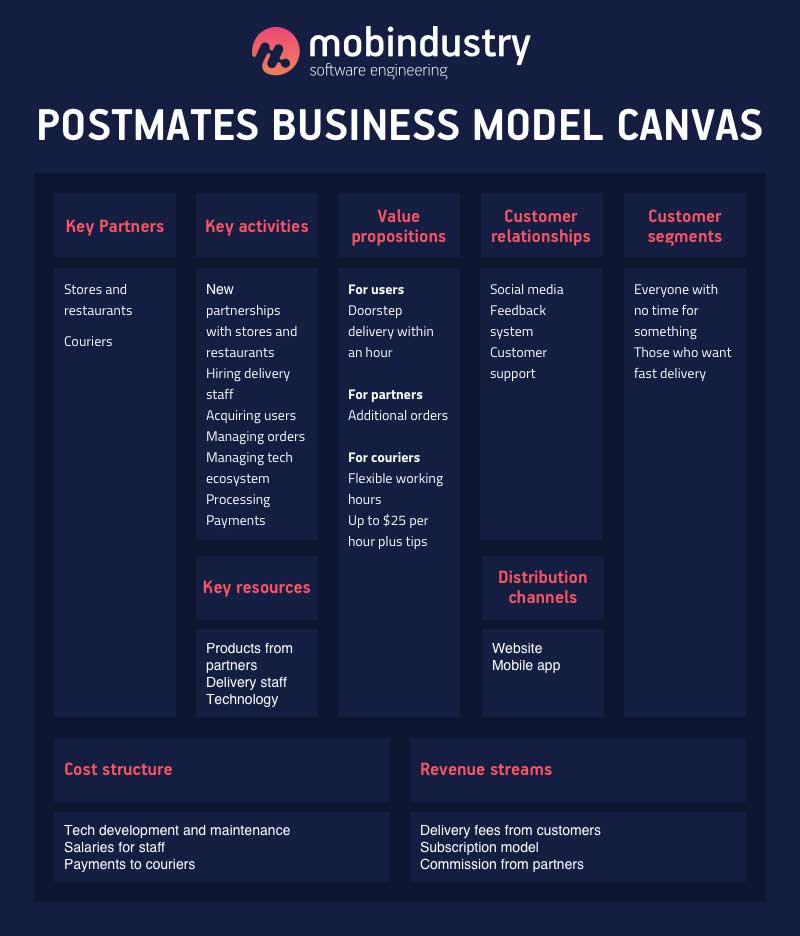
How to come up with a unique value proposition
We’ve already talked about Postmates’ unique value proposition and how successful it is. But how can you come up with a unique value proposition for your startup? Here are some tips that might be useful:
- Use modern technology. Technologies like chatbots, text-to-speech functionality, and voice recognition can motivate people to use an app. Note that implementing these technologies will affect the food delivery app development cost.
- Don’t forget about personalization. You can make separate apps for buyers and partners. Companies like Uber create multiple apps to provide a unique user experience for each target audience.
- Implement augmented reality (AR). You can implement AR for different use cases. For example, you can use it to visualize food, provide navigation for couriers via a smartphone camera, etc. Remember that implementing AR features will be quite pricey, however.
Three reasons to build a delivery app like Postmates
If you still have doubts about making a food delivery app like Postmates, here are three reasons to create such an app.
Demand
An omni-channel strategy is important for winning in a competitive market. Retailers and restaurants depend on last-mile delivery companies to cater to the needs of consumers. McKinsey expects today’s 35% market penetration of last-mile delivery services to double in four years.
Capital
The global food delivery market is growing extremely fast. Worldwide revenue is expected to increase to $146.7 billion by 2022. The key reason why consumers are choosing online food delivery is the overall level of funding for the industry and the size of marketing budgets.
Technology
New technologies can change the rules of last-mile delivery. The last mile has always been the most expensive and the least efficient. But with the use of new technologies, this can change. Delivery droids, drones, and AI solutions are coming to the rescue.
Postmates like app development
Create a project plan for your last-mile delivery app
A successful last-mile delivery app should be based on a well-structured project plan. Here’s how to create a project plan for a last-mile delivery app.
Start making a plan by asking these basic questions
- Why am I creating a last-mile delivery app?
- Who will use the last-mile delivery app?
- Who will implement the last-mile delivery app?
- How much do I plan to invest in last-mile delivery app development?
There are more questions to consider when developing a project plan, but these are the most important ones that can give you an idea of where to start.
Come up with a last-mile delivery app user journey
For a basic last-mile delivery app, the user journey consists of five main steps:
- Select a restaurant. Restaurants can be filtered by location, type, etc. Or users can just enter a name.
- Create an order. Users can add items to an order from a restaurant’s menu or a shop’s inventory.
- Confirm the order. A user can view items in an order, see an estimated subtotal, select a delivery time, and confirm the order.
- Track the order. A user can see the exact location of an order in real time while it’s in transit.
- Rate the delivery. Once an order has been flagged as delivered, the feedback/rating system allows the user to comment on the experience from start to finish.
Choose the core features of your food delivery app
Make a list of valuable features for your last-mile delivery app. Don’t forget to research the market to find out what features your target audience will need. Note that the market is full of great solutions, and to stand out, you’ll need to come up with a unique value proposition. When making a list of features for a last-mile delivery app, remember that your app needs to cater to three customer segments: buyers, couriers, and restaurants/stores.
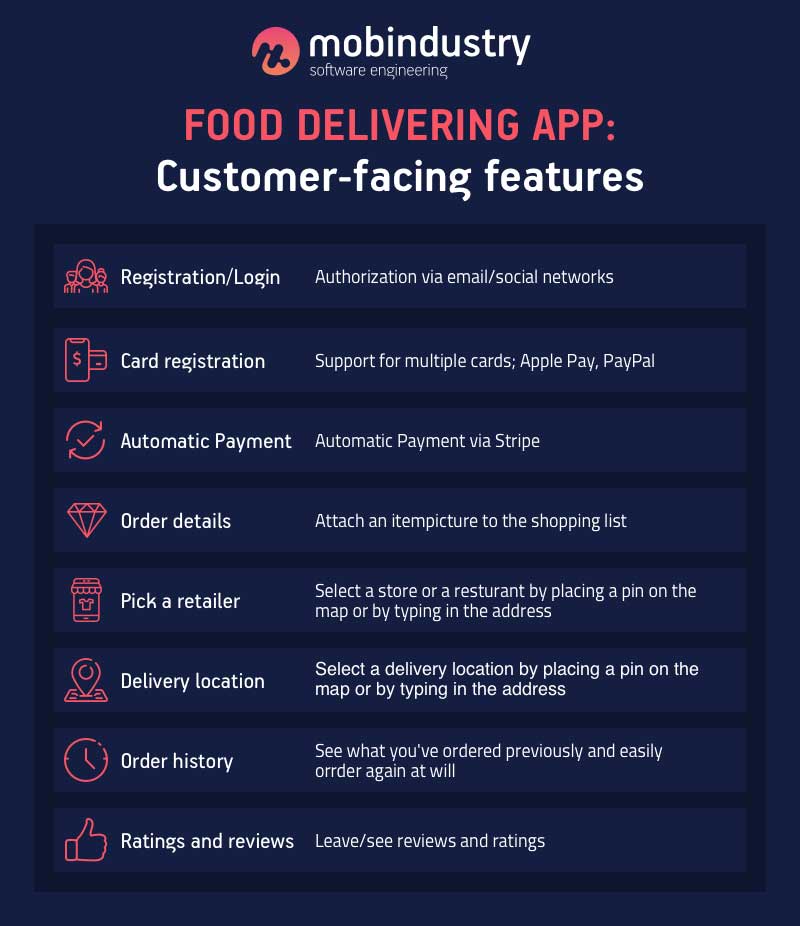
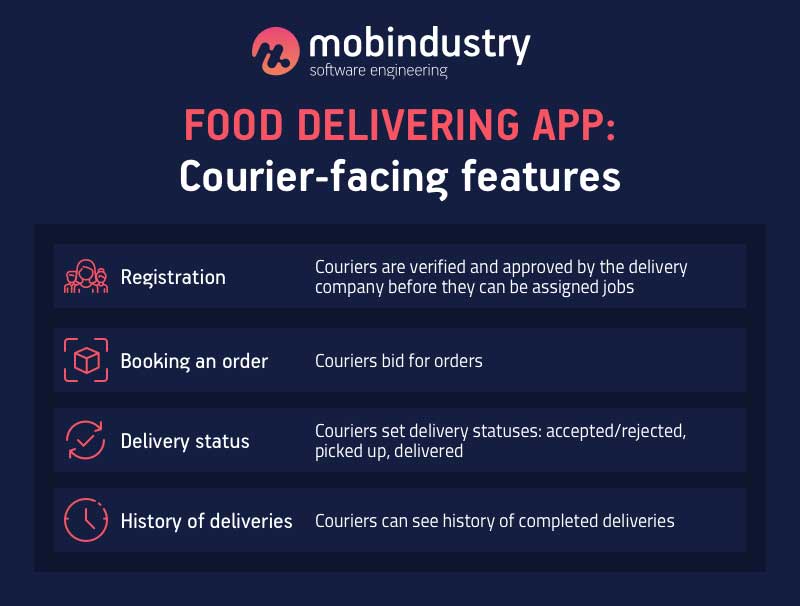
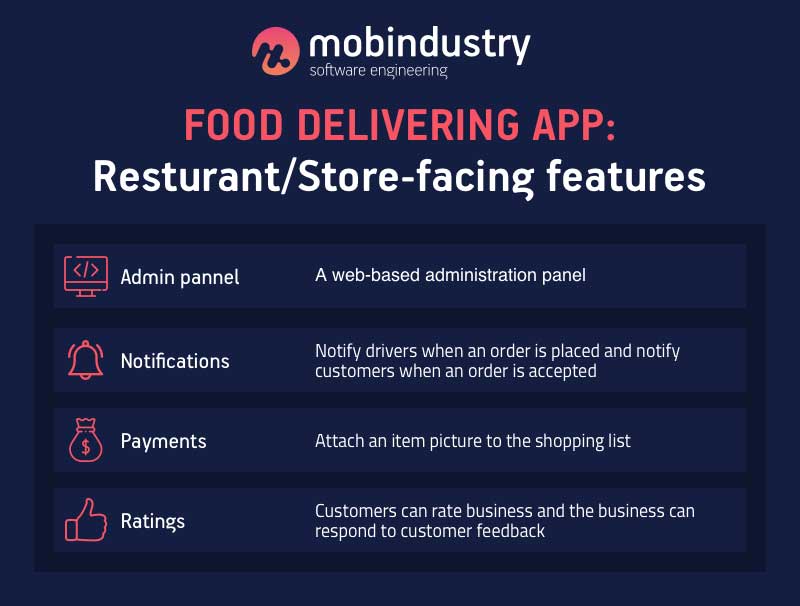
Hire an app development company
To help you build your last-mile delivery app, hire a professional last-mile delivery app development company. The first phase of development will include business analysis, developing a technical specification, estimating the development cost, and planning the project. Before diving into the actual development, you and your team should create an app development workflow, choose the main features for the app, and design the app concept.
Mobindustry has experience developing delivery apps. We’ve been working with a European logistics company that decided to create a customer-facing mobile app over three years ago. We deployed the app and have continued supporting it since. But over the years, UI and UX standards have changed. In the case study below, we describe how we redesigned both the visual aspects and business logic of this logistics app:
Build an MVP for your last-mile delivery app
Start by creating a minimum viable product (MVP) of your last-mile delivery app. By first launching an MVP and testing its technical and business performance, you’ll be able to find out what users like and don’t like in your app. Then you’ll be able to consider their feedback and improve your app.
The latest news from Postmates
Uber is looking for new ways to boost its service performance. Earlier this year, the company tried to buy GrubHub, but the deal fell apart. On July 6, 2020, Uber announced that it had acquired Postmates in a $2.65 billion all-stock deal.
List of Postmates technologies
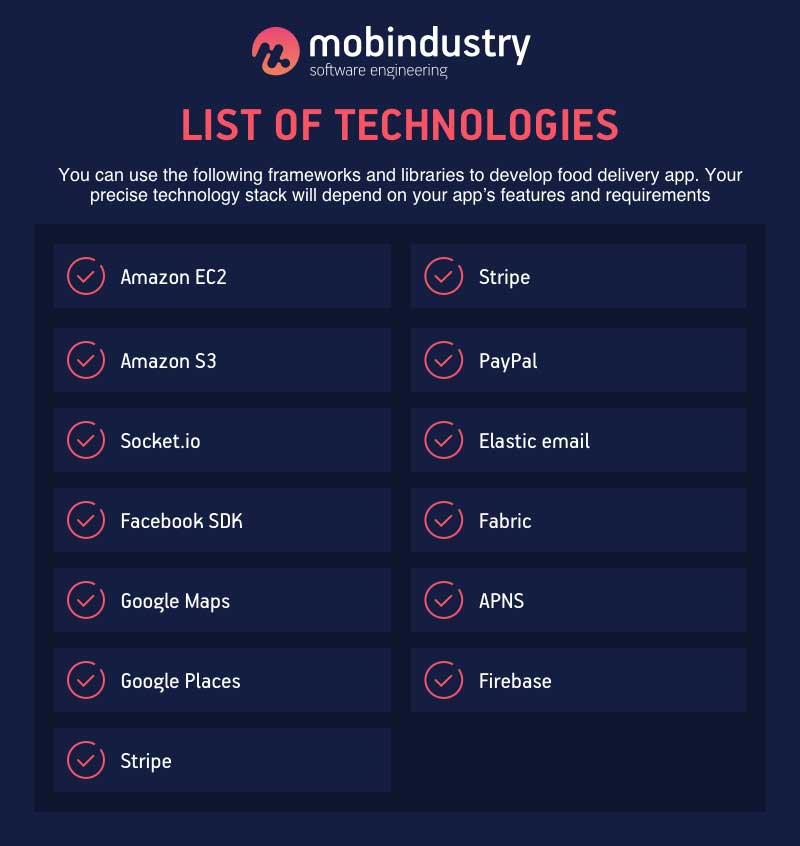
How much does it cost to make a last-mile delivery app like Postmates?
The cost of mobile apps like Postmates depends on these factors:
- Features
- Design
- Hourly rate of your development team
- Project size
The biggest factor that influences an app’s cost is the hourly rate of developers. And hourly rates often depend on the location. For example, an application that costs $40,000 to build in the US will cost around $9,000 if developed by engineers in Ukraine.
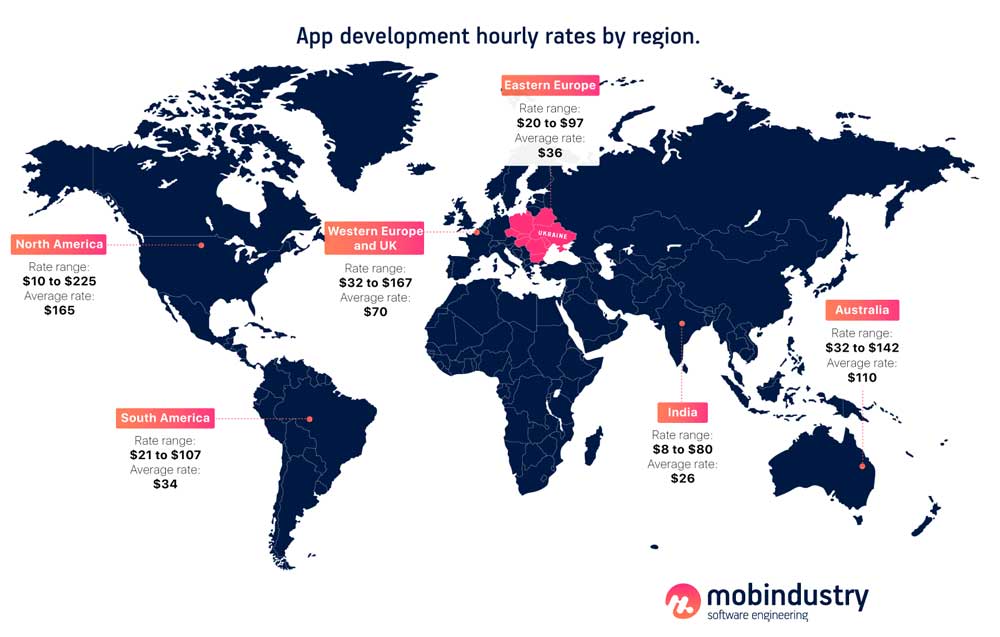
Developing your app with a company based in Eastern Europe is cost-effective and gives you access to top talent.
Mobindustry’s expertise in food delivery app development
At Mobindustry, we have experience developing both food delivery apps and large logistics solutions. One of the food delivery apps we created was an unusual experience as we worked on an off-the-shelf white-label solution instead of developing the app from scratch.
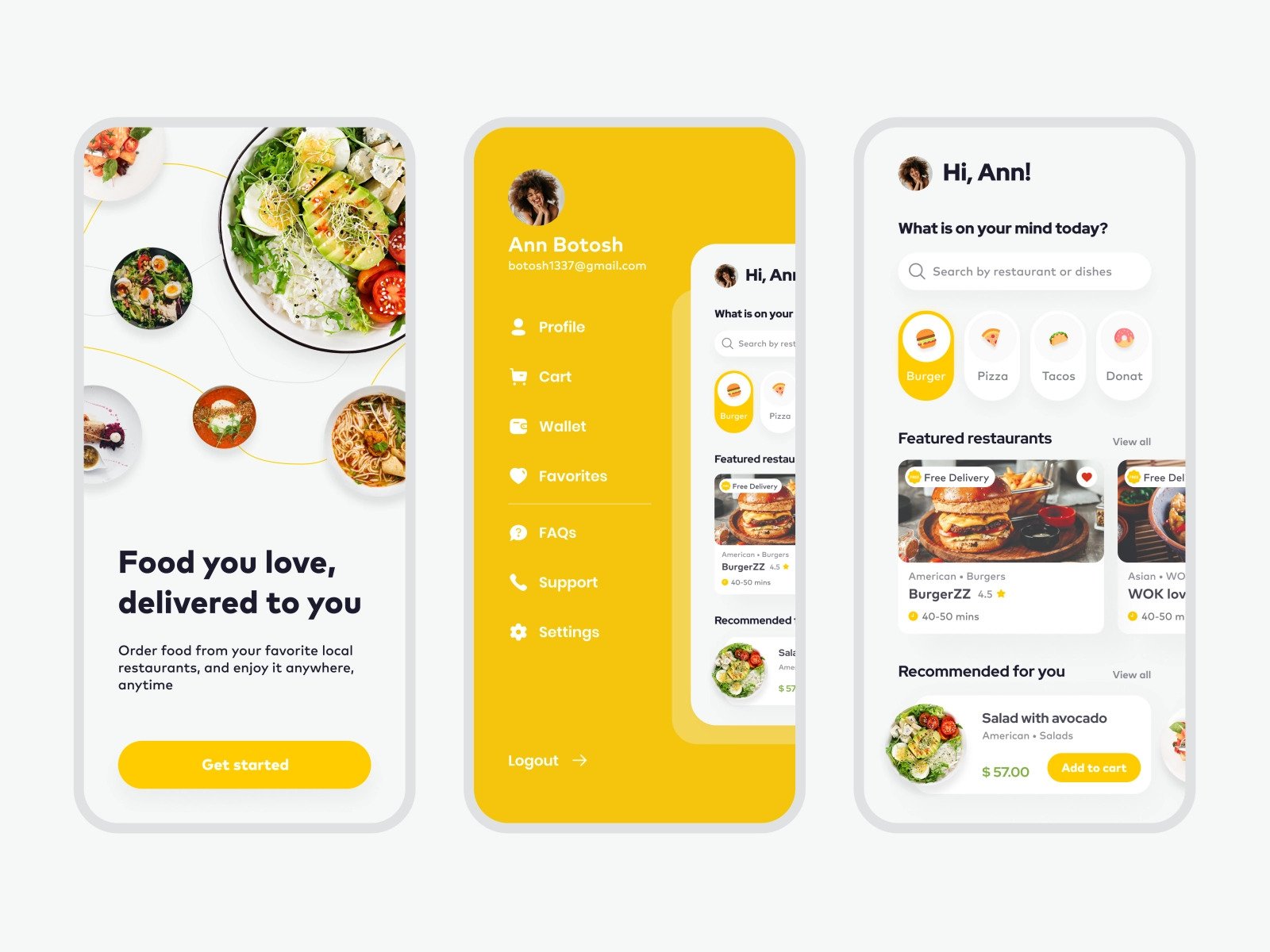
This app lacked all the necessary features, so we had to audit it from both the technical and business standpoint. After the audit, we suggested additional features and also developed a design concept that would make our client’s app unique.
You can read more about the challenges, goals and results in this case study:
Quick summary of developing a last-mile delivery app like Postmates
Developing a last-mile delivery app like Postmates is a long and hard process. But if done correctly, your app can be successful and bring a lot of value to you as a business owner.
Key takeaways:
- Use modern technology to encourage customers to use your app.
- Make separate apps for buyers and partners to provide a unique user experience for each target audience.
- Create your own unique value proposition. The market is full of great solutions, and you’ll need to stand out from the crowd.
If you want to create a last-mile delivery app like Postmates but don’t know where to start, contact Mobindustry for a consultation.

